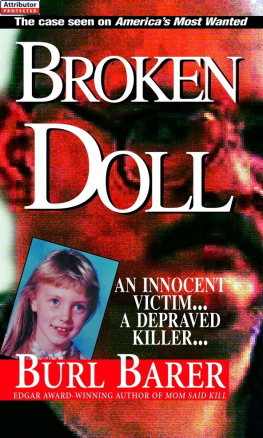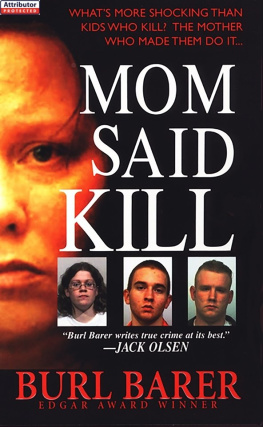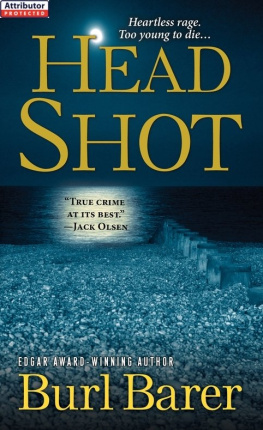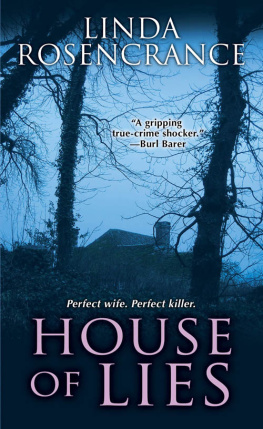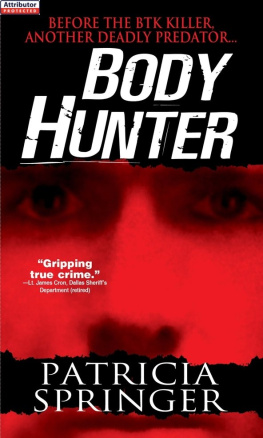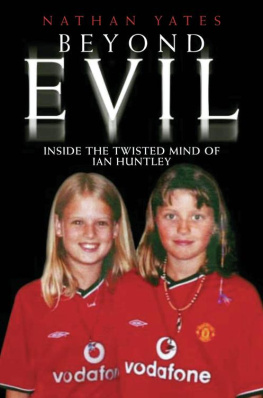ACKNOWLEDGMENTS AND AUTHORS NOTE
This horrific story of homicide, lies, obsession, and postmortem sexual deviancy is one of relentless tragedy, dismay, frustration, inadvertent errors, and eventual victory. The Spokane Serial KillerRobert Lee Yates Jr.began his trail of terror over twenty-five years ago in my hometown of Walla Walla, Washington, population 27,000. His victims families lived not far from my own family, and the pain of those unsolved homicides nagged at our little community for over a quarter of a century. In the late 1990s, he murdered women of high-risk lifestyles in Spokane, Washington. Among them was Shawn Johnson, a graduate of Walla Walla High School, my alma mater, and Darla Sue Scott, former girlfriend of Arthur A., a longtime friend.
Unlike my previous true crime books for Pinnacle, this is not a case which I brought to my publishers attention. Rather, because of my familiarity with the social and cultural makeup of the locales, and my personal interaction with one or more principal characters, Pinnacle asked me to take the case.
At first, I was reticent. Due to its high-profile nature, I feared that an exploitive and superficial rendering of the investigation would be in bookstores before I began my initial research. I was correct. The Spokane homicide task force was outraged and insulted by the other authors inaccuracies and allegations. As a result, my arrival at task force headquarters announcing that I was writing a book about their successful investigation initially triggered more serious concern than enthusiastic cooperation. Subsequent meetings with Sergeant Cal Walker, the homicide task force detectives, and Spokane County Sheriff Mark Sterk allayed their fears regarding my motives and approach. Doors were opened, questions answered, and all was revealed.
It would take more than a year of research and one hundred thousand words to tell this story, said Sergeant Walker. We made mistakes, of course. Everyone does. But the proof of the investigation is in the outcomeand Robert Lee Yates, Jr. was arrested, charged, convicted, and sentenced to over four hundred years in prison for these murders. He still faces the death penalty for two other homicides in Pierce County.
Condensing such elaborate and complex events, issues, and intense investigative methodologies into a comprehensible narrative would have been impossible were it not for the exemplary cooperation afforded the author by the Spokane County Sheriffs Office, the detectives of the Spokane homicide task Force, Walla Walla Sheriff Mike Humphreys, Detective Mike Skeeters, and many others too numerous to mention individually, who appear within these pages.
Conversations and statements recounted in this book are adaptations of such as recalled from memory. For purposes of clarity, concision, and continuity, statements and conversations necessitated condensation and emendation. For obvious reasons, the names of many secondary characters have been changed.
The author has made every effort to preserve accuracy of fact and portrayal. Any errors are unintentional. Gratitude is expressed to Andy Sorfleet, Jenette Marlowe, and the Sexual Workers Alliance of Vancouver, for their significant contributions, cooperation, and guidance concerning prostitutes rights.
The investigation into the multiple homicides committed by Robert Lee Yates Jr. saw dedicated professionals, working under adverse and challenging conditions, accomplish a Herculean task. Funding was inadequate; staffing was insufficient, public apathy was palpable, and armchair quarterbacksincluding a convicted felon and self-proclaimed expert on detectionheaped derision on the task force with tactless and tasteless regularity.
In the end, the task force captured the killer, and the killer confessed. The case was closed. Unfortunately, the twenty-one-bed womens shelter created to specifically shield women who fit the victim profile of alcoholic and drug-addicted prostitutes was threatened with closure the moment Yates was securely behind bars.
We are nothing but serial killer fodder, commented a homeless Spokane woman. As long as we can be fed to the sharks, the good people feel safe. Do they think Im not a real woman because Im on the street? Do they think Im not a real woman because I perform sexual services for men who are not getting their needs met otherwisemen who are perfectly happy to pay me for what they should be getting at home for free?
Happily, Americorps volunteers stepped in and kept the shelter open.
Most clients of prostitutes are convivial regulars who pose no threat, cause no trouble, and commit no felonies. There is, however, that deadly minority who beat, torture, and kill these women specifically because they can without causing public outrage.
The answer is not stronger laws against sex workers and their clients. Rather, sex workers should receive the same protection under the law as workers in any other profession. This is the stated goal of the North American Task Force on Prostitution. Founded in 1979, the North American Task Force on Prostitution is a network of sex workers, sex workers rights organizations, and individuals and organizations that support the rights of sex workers to organize on their own behalf, work safely, and do so without legal repression.
As for Robert Lee Yates Jr., theories abound as to what causes a man to cross the line between fantasy and realityto act out in the real world of flesh and blood the personal fantasies best kept fleeting and private. According to some homeopathic physicians, the remedy for individuals such as Yates is anacardium, a substance needed by people who have been abused, and/or feel inadequate. It could be that simple; it could be far more complex. Robert Lee Yates Jr. fits the classic definition of a psychopath.
The foundation of all current knowledge on the topic of psychopaths and their behavior is based upon the extensive researchover thirty yearsof Dr. Robert Hare, author of Without Conscience. It was he who first delineated the relationship between psychopathy and crime, and defined psychopathic behavior.
According to Dr. Hare, psychopaths are social predators who use charm, manipulation, intimidation, and violence to satisfy their own needs. They are found in both sexes and in every society, race, culture, ethnic group, and socioeconomic level. Although small in number, their contribution to the seriousness of crime, violence, and social distress in every society is grossly out of proportion to their numbers.
Psychopaths can readily be identified by qualified clinicians noting the defining features of the disorder. Among these are repetitive, casual, and seemingly thoughtless lying, apparent indifference to, or inability to understand, the feelings, expectations, or pain of others, and a complete lack of conscience.
Just as the colorblind cannot experience red, blue, green, or yellow, a person without a conscience cannot experience empathy, sympathy, compassion, remorse, guilt, or shame. Psychopaths, said Dr. Hare, have no anxieties, doubts, or concerns about being humiliated, causing pain, sabotaging future plans, or having others be critical of their behavior.
The senses of guilt, shame, and remorse (penitence) are not the same. Guilt is feeling bad about what you have done. Shame is feeling bad about what you have not donethe actions not taken, the standard not attained. Remorse, or penitence, is a combination of emotions. Famous philosopher Adam Smith considered it the most dreadful of all sentiments. He described it as made up of shame from the sense of the impropriety of past conduct; of grief for the effects of it; of pity for those who suffer by it; and of the dread and terror of punishment.



